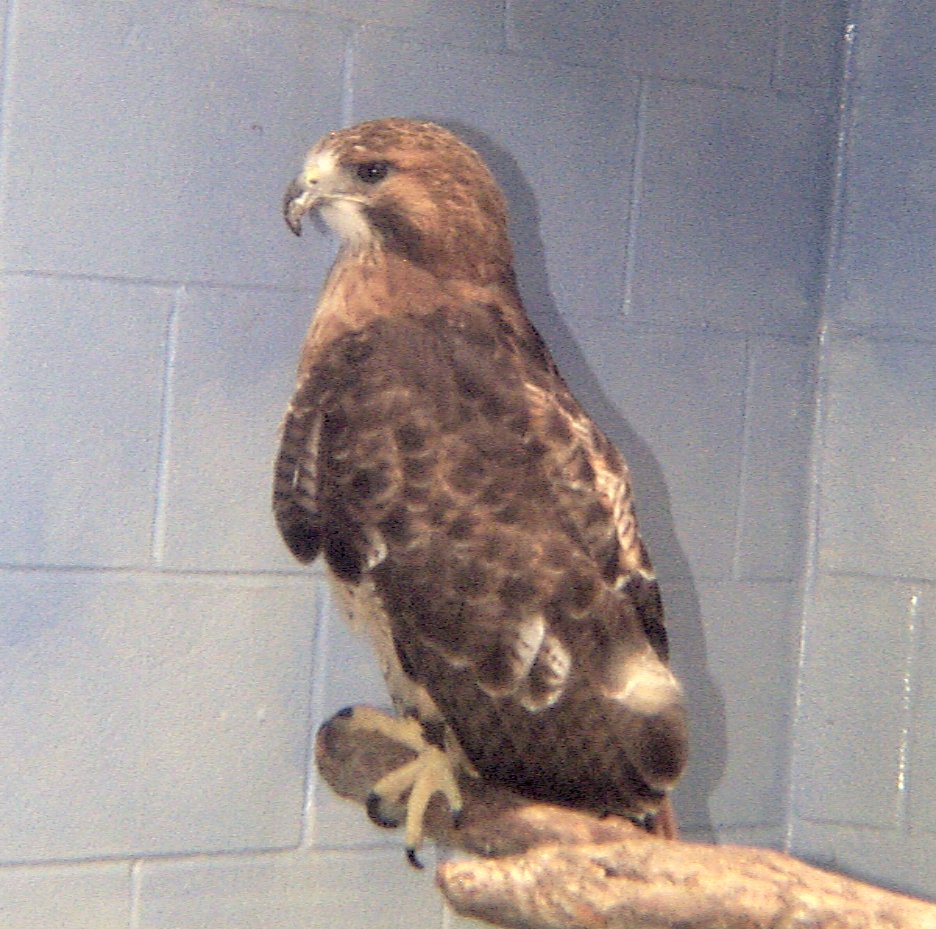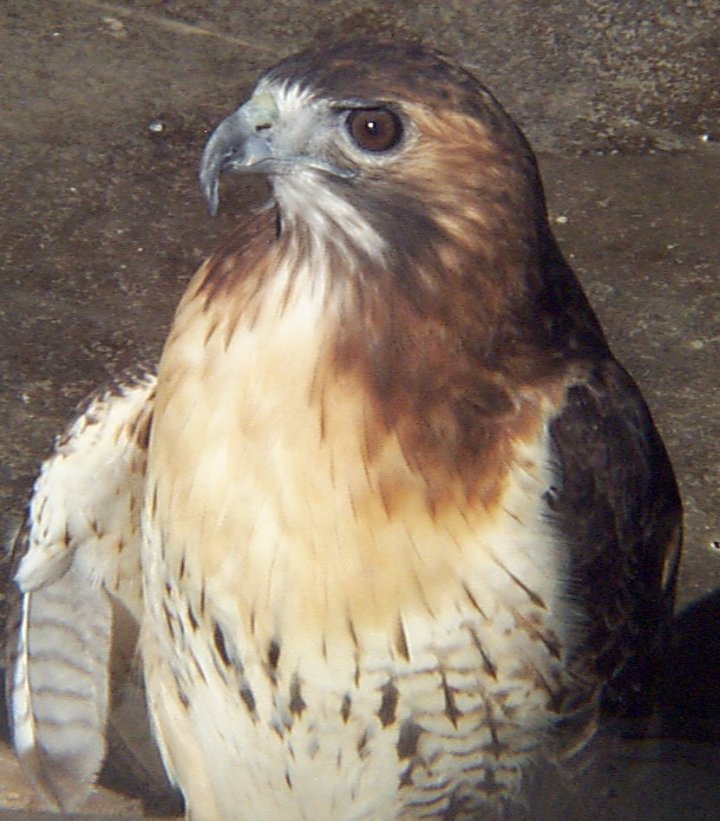| Length: 22" Wing Span: 56 inches". Sexual Maturity: 3 yrs. Mating Season: spring Incubation: 28-32 days No. of Eggs: 1-3 Birth Interval: year Life span : 10-21 yrs. |
| General
information: The Red-tail can be found high in the sky or perched on a telephone pole. To help in identifying the Red-tail Hawk look at the rounded tail which will show off a russet red color. This will only be in hawks that have reached there second year in age, when the molting process takes place. |
| Personal
Observations:
In my neighborhood there are many
fields where I've seen a Red-tail Hawk. This bird is very distinct
in his coloring and is not hard to identify when in flight. Typically
when I see this hawk it is perched on top of a telephone pole or a road
sign. Another aspect that will help you spot this bird is its
size. It is much bigger than most birds that are in the area. |
| Source
Materials and Related Links:
|
| Send E-mail to enjohnson76@hotmail.com or to mac@whozoo.org |
WhoZoo Home

